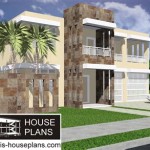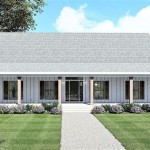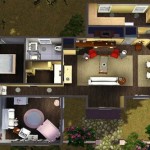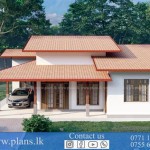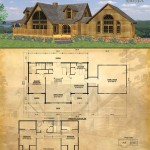Sun-Filled House Plans: Bringing Natural Light Into Your Home
Sunlight is a powerful force, capable of transforming a space from ordinary to extraordinary. A well-designed home that embraces natural light can enhance your well-being, create a sense of spaciousness, and elevate the overall ambiance. Sun-filled house plans are a thoughtful approach to architecture, prioritizing the strategic placement of windows and other design elements to maximize sunlight exposure throughout the day. This article will explore the key principles behind sun-filled house plans, highlighting the benefits of maximizing natural light and providing practical tips for incorporating these concepts into your own home design.
Maximizing Daylight: Strategic Window Placement
The foundation of sun-filled house plans lies in the strategic placement of windows. Windows act as portals, allowing sunlight to penetrate the interior, illuminating rooms and bringing the outdoors in. To optimize daylight exposure, architects consider several factors:
1. Orientation: The direction a house faces plays a significant role in sunlight exposure. In the Northern Hemisphere, south-facing windows receive the most sunlight throughout the day. East-facing windows offer ample morning light, while west-facing windows provide warm afternoon light. Consider your local climate and desired lighting patterns when determining window placement.
2. Size and Shape: Larger windows allow for more natural light to enter the space. Floor-to-ceiling windows are especially effective in maximizing daylight, while bay windows provide a unique architectural detail that enhances both light and views. The shape of windows can also influence light diffusion. Rectangular windows allow direct beams of sunlight, while arched windows create a soft, diffused light.
3. Window Placement: Windows placed strategically throughout the house ensure that even rooms without direct sunlight receive natural light. For example, windows placed high on the wall can illuminate the ceiling, creating a bright and airy space. Skylights are another excellent way to bring sunlight into rooms that lack direct access to windows.
Beyond Windows: Other Design Elements for Sunlight
While windows are the primary means of introducing sunlight, other design elements can enhance the flow of light throughout a home. These include:
1. Lightwells: Lightwells are open shafts that bring light into the center of a building. They are particularly effective in multi-story homes, providing a natural source of light to rooms that might otherwise be dark. Lightwells can be integrated into courtyards, atriums, or even open staircases.
2. Light-Reflecting Materials: Light-colored walls and floors reflect sunlight, enhancing the brightness of a space. Using glossy finishes on surfaces, such as countertops or cabinetry, can also increase the reflection of light. It’s important to consider the interplay of light and dark elements in your home to create a balanced and harmonious ambiance.
3. Open Floor Plans: Open floor plans allow sunlight to flow freely between rooms, minimizing shadows and creating a brighter and more inviting atmosphere. This approach is especially effective in smaller homes, where maximizing natural light can create a feeling of spaciousness.
Benefits of Sun-Filled House Plans
The benefits of incorporating sun-filled house plans extend beyond aesthetics. These design features have a positive impact on both physical and mental well-being. Here are some key advantages of maximizing natural light in your home:
1. Improved Mood and Productivity: Exposure to sunlight can elevate mood, reduce stress, and improve productivity. Studies have shown that workplaces with natural light have higher employee satisfaction and performance rates. By embracing sun-filled house plans, you can create a brighter and more uplifting environment for your home.
2. Energy Savings: Natural light can significantly reduce the need for artificial lighting, leading to lower energy consumption and reduced utility bills. This is especially beneficial in regions with high electricity costs or where sustainability is a priority.
3. Enhanced Health and Well-being: Exposure to sunlight is essential for the production of vitamin D, a vital nutrient for bone health and immune function. Sun-filled house plans promote spending more time indoors in natural light, benefiting both physical and mental health.
Incorporating sun-filled house plans into your next construction project or renovation can transform your home into a brighter, more inviting, and healthier space. By thoughtfully considering window placement, utilizing reflective surfaces, and maximizing natural light sources, you can create an environment that fosters well-being, energy savings, and a sense of connection to the natural world.

Sun Filled Spaces 30000rt Architectural Designs House Plans

400 Square Foot Sun Filled Tiny House Plan 560004tcd Architectural Designs Plans

Plan 24723 Sun Filled Dining Room

Sun Filled Exclusive Modern Prairie Home With Casita 85247ms Architectural Designs House Plans

Plan 30000rt Sun Filled Spaces Cottage House Plans Craftsman Homes

Sun Filled Spaces Created By Skylights In 20 Architectural Projects Archdaily

Sun Filled Exclusive Modern Prairie Home With Casita 85247ms Architectural Designs House Plans

Plan 85247ms Sun Filled Exclusive Modern Prairie Home With Casita House Plans

Sun Filled Exclusive Modern Prairie Home With Casita 85247ms Architectural Designs House Plans

Sun Filled View Home Design With Well Designed Cross Hip Roof Cool House Concepts

